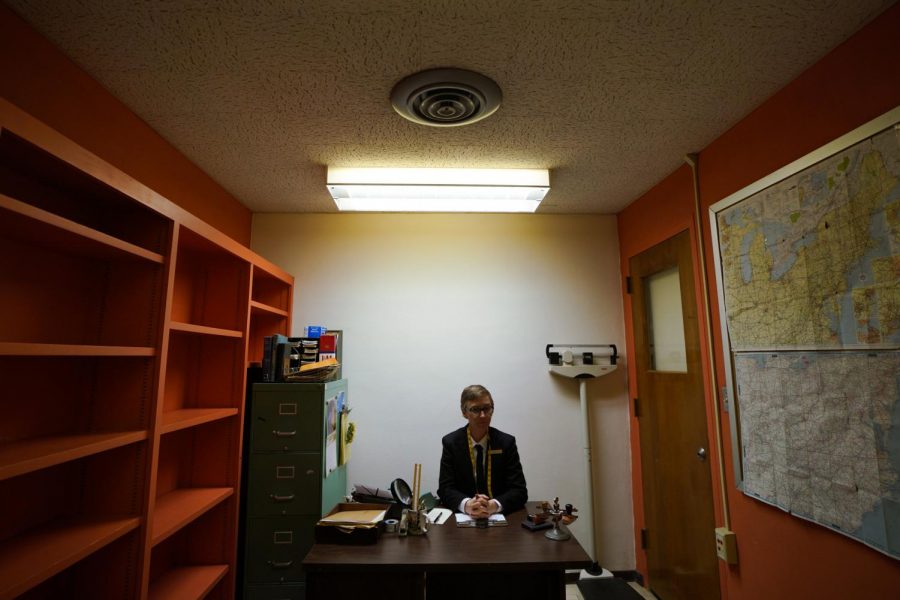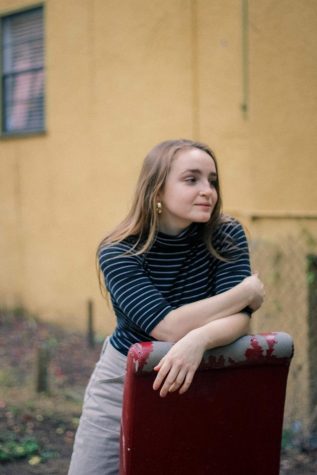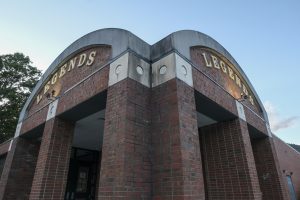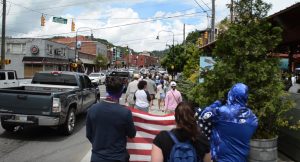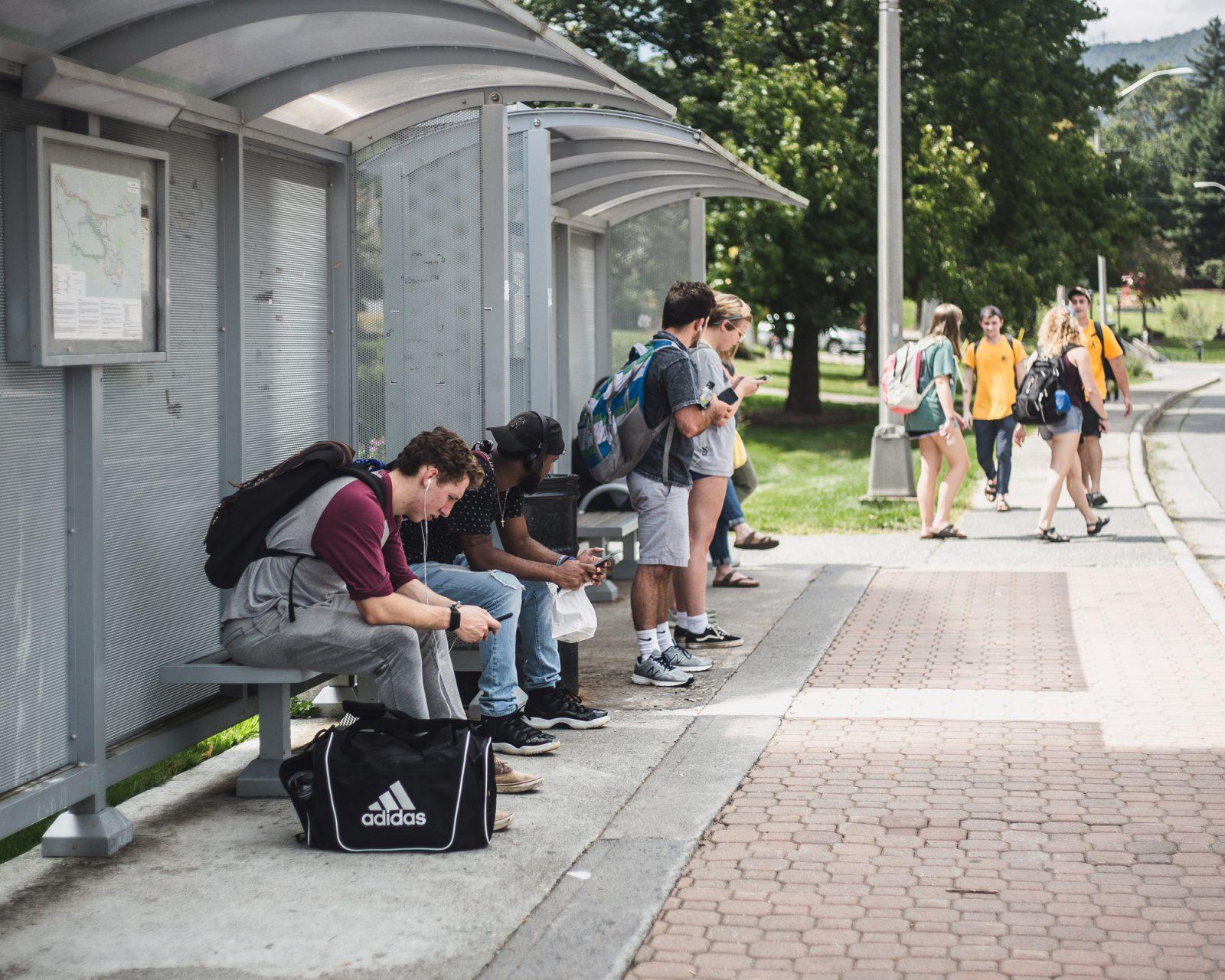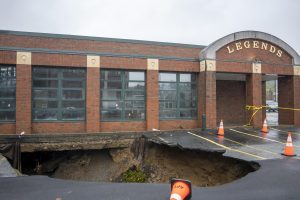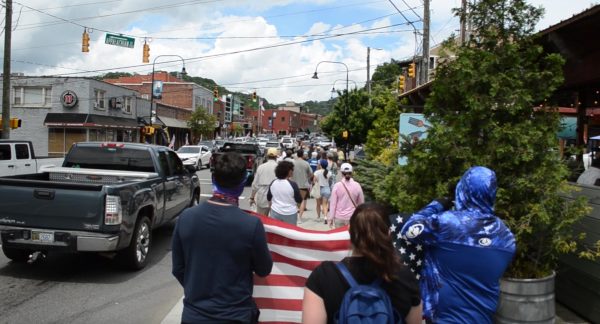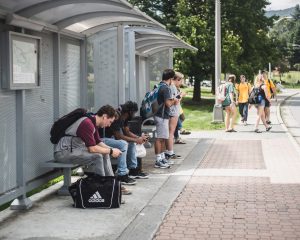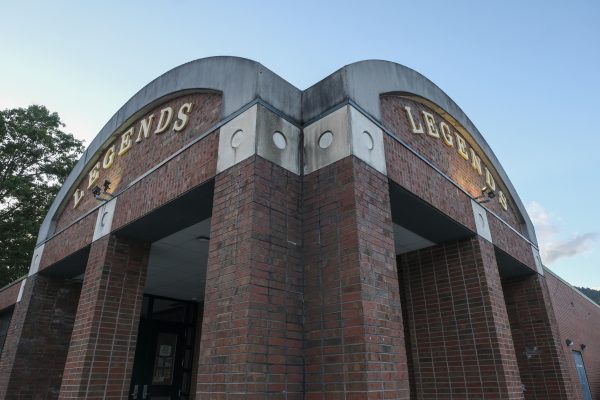Performance art installment explores topics of citizenship and immigration
Stacey Kirby sits in the “Civil Presence Office,” waiting for the next round of participants to pass through with their paper work. Kirby’s performance pieces are often situated in vintage office settings; this is partially a tribute to her mother, who occupied similar spaces as a court recorder.
April 1, 2019
“Anyone in the 1160s?” rang across the busy waiting room. People tugged up their sleeves and glanced at their wrists, looking at the number stamped there in bold, black ink. A few rose from their seats tentatively. The number caller, a student wearing a tie and suit jacket, escorted them down the hall toward a door marked “Civil Presence Department.”
This was the beginning of Durham-based artist Stacey Kirby’s “Civil Presence,” a performance series and art installment exploring topics of citizenship and immigration. The project re-opened at App State on March 21 after its initial run in early February.
A pop-up exhibition of student creations from art classes accompanied the performance. The participating classes were taught by Erin Ethridge, Jody Servon and Maurice Meilleur, educators from the art department.
Taking inspiration from post-World War II era office paperwork, Kirby scripted and designed an unconventional test of citizenship, structured to mimic the bureaucratic processes of United States Citizenship and Immigration Services agency. Participants became a part of the performance as they passed through.
To bring the experience to App State, Kirby transformed several unused offices on the first floor of Edwin Duncan Hall into the “Civil Presence Department.” Like other spaces Kirby has repurposed for her art, the offices embodied aesthetics of the ‘60s, during the rise of civil defense. Students and community members, many from the Latinx community, performed alongside Kirby, distributing “Civil Presence Tags,” recording personal information by typewriter and questioning participants.
Freshman anthropology and Spanish major Judith Espitia-Lara, who greeted participants by stamping their wrists, described the process as “polite belittling.”
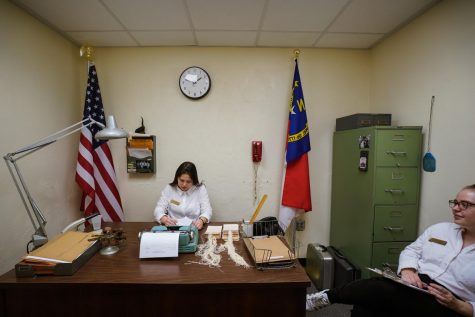
Two “Civil Presence” performers type up participant information in the first room of Kirby’s installation. Performers asked participants to share their full name, location of birth, current residence, date of birth and “alien status” on the tags seen on the desk.
“They’re being stamped; they’re being reduced to a number and that felt really authoritative,” Espitia-Lara said. “I felt like I was kind of dehumanizing them.”
Kirby, with her measuring tape draped around her neck, took on the most difficult role herself. In her cramped office, she rejected participants’ IDs, asked if they spoke English, advised them to ditch all non-conforming ideologies and took bodily measurements, such as the circumference of their wrists when crossed behind their back and the distance from their heads to their hearts. These measurements engaged participants in a physical reflection on the experiences immigrants often encounter: standing in line, facing arrest, appearing in court.
At the end of their walkthrough, Kirby stamped each participant’s tag with one bold word: absence.
“It’s invalidating, which is really the opposite of some of the work I’ve been doing,” Kirby said. “They lose their sense of identity and safety that they think they deserve to have without having to do anything.”
Similar to Kirby’s other performance pieces, however, the opportunity to respond to the piece helped empower participants. In one office, a performer asked participants to reflect back on their conception of presence at the bottom of their tag. While writing, participants sat wrapped in the aluminum foil-like blankets U.S. Customs and Border Patrol has offered to detained immigrants. In her previous performance installments, such as “The Declaration Project and VALIDnation,” Kirby sent participants’ handwritten responses to public officials. She will continue this tradition with the new notes.
Kirby has amassed thousands of public responses through the forms used in her performative work over the past 12 years. She said she sees herself as a caretaker of a reflective archive.
Many responses from her installment at App State referred to the recent U.S. Immigration and Customs Enforcement raids across Wake, Durham and Mecklenburg counties. These incidents resulted in the arrests of over 230 undocumented immigrants in February.
“It’s a snapshot of what’s going on in people’s lives in during this time period,” Kirby said. “If I keep doing this over a certain time, people will see an evolution and change.”
In addition to the performance, Kirby set up an installment at the Smith Gallery, featuring a large mural emblazoned with the phrase, “Yo Soy Válida,” Spanish for “I am Valid.” The mural recreated imagery from Kirby’s billboard that hung over a Durham freeway before the 2018 midterm elections. Smith Gallery director Jennie Carlisle, a longtime friend of Kirby, said the mural took 14 people and 30 hours to complete.
Before designing the “Civil Presence” performance, Kirby guided a 17-year-old Latina student in a six-month creative mentorship program. As they met each week, Kirby’s perspective on the state of immigration evolved.
“I spent a lot of time listening because I realized that was my role, just to listen to her life experience, her family’s life experience,” Kirby said.
After the mentorship program, Kirby completed racial equity training, which inspired her to create a new piece responding to her mentee’s stories and the changing state of immigration affairs. The opportunity arose in October when she was invited to participate in a cross-disciplinary collective performance exploring the theme of absence and presence.
“That launched me into thinking about how that theme relates to the Latinx community and also communities of color,” Kirby said. “Specifically with the Latinx community, we’re forcing them to be out in the open and acknowledge a presence in a fearful and threatening way, but you know, we treat them as absent.”

